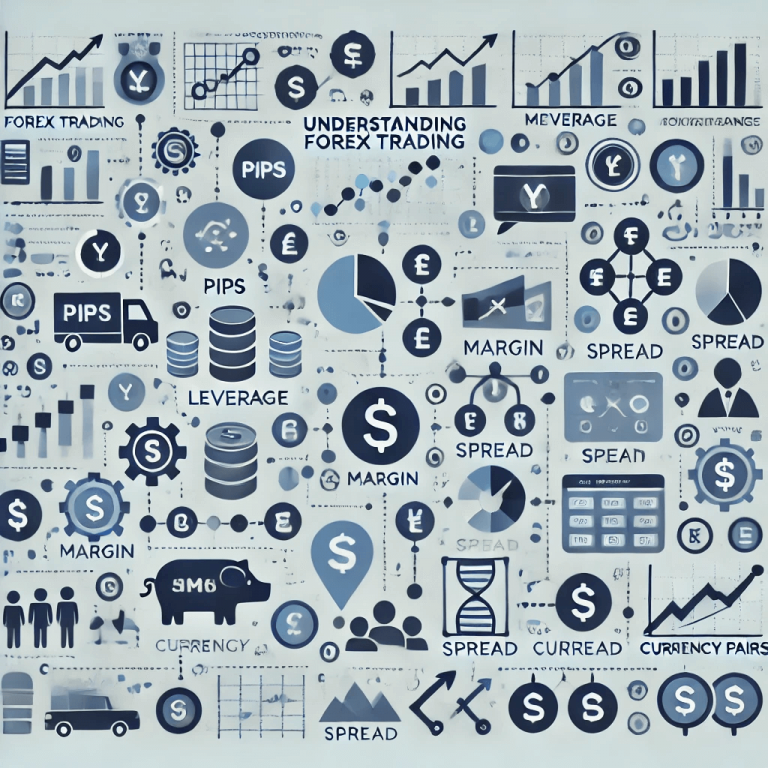The financial markets offer a multitude of earning opportunities, and one of the segments that has been growing exceptionally fast in recent years is prop trading. Although trading under this model requires appropriate skills and rigorous discipline, prop trading is becoming an attractive career path for those who wish to develop as traders. How does a prop trading firm operate, what are the benefits and challenges associated with being a prop trader, and what conditions must be met to secure a contract?
Table of Contents
- What is Prop Trading and How Does It Work?
- Advantages and Disadvantages of Prop Trading
- What Skills Are Needed to Work as a Prop Trader?
- How to Start Your Journey in Prop Trading?
- Is Prop Trading for Everyone?
- Summary
Key Information
- Prop trading involves trading with the firm’s capital, allowing traders to access a large amount of funding.
- Collaboration can take the form of a fixed salary model or through funding programs.
- Traders utilize advanced analytical tools and trading platforms.
- Strategies and risk management guidelines are crucial for success.
What is Prop Trading and How Does It Work?
The term “prop trading” is short for proprietary trading. It refers to the activity in which proprietary trading firms allocate their own funds to generate profits on live accounts through the efforts of their traders. A trader employed by such a firm receives an account and independently executes trades on it. In theory, this collaboration can involve various types of instruments; however, most practitioners in this field operate on the Forex market.
Prop trading differs from the traditional approach of brokers, who earn commissions on transactions executed by their clients. In the case of prop trading firms, all profits (or losses) from transactions belong to the firm rather than its clients. This means that the firm not only facilitates transactions but also assumes the risk associated with the investments made. Modern analytical tools, trading algorithms, and advanced platforms enable effective risk management and the utilization of diverse investment strategies.
Additionally, prop trading firms often offer different models of collaboration – including full-time employment with a base salary and performance-based bonuses, as well as funding program models where traders take on a challenge in order to gain access to the firm’s capital. According to the latest Eurostat statistics, the number of prop trading firms increased by 15% over the past 5 years (Source: Eurostat, https://ec.europa.eu/eurostat).
Advantages and Disadvantages of Prop Trading
The main advantage of prop trading is that traders do not risk their own savings. The entire capital used for trading comes from the prop trading firm, which allows for significantly higher leverage and the possibility of achieving greater profits. Depending on the firm’s policy, the funding may originate from various sources – most firms use their own capital, but some institutions also secure additional funds from external investors, such as private equity funds.
Other important advantages include:
- the ability to trade with large capital – prop trading allows you to earn significantly higher amounts than trading with your own funds, enabling traders to achieve greater profits;
- access to modern analytical tools – firms provide their advanced trading platforms, analytical tools, and automated trading systems, which increase the chances of success;
- training and support from professionals – traders can benefit from training, mentorship, and expert support, which enhances their career development opportunities;
- elimination of the risk of losing personal savings – since traders do not use their own funds, they do not have to fear capital loss in the event of poor investment decisions.
On the other hand, the disadvantages include:
- performance pressure – traders are obliged to generate profits, which comes with significant pressure, especially during dynamic market phases;
- risk management – strict risk management rules may limit trading flexibility;
- high demands and competition – recruitment in prop trading firms is very rigorous, and success is not guaranteed.
| Advantages | Disadvantages |
|---|---|
| No risk of losing personal savings | Performance pressure |
| Access to modern analytical tools | Restrictions in risk management |
| Ability to trade with large capital | High requirements level |
| Professional support | Risk of overtrading |

According to data from the International Monetary Fund, 65% of traders employing the prop trading model achieve better annual results (Source: IMF, https://www.imf.org).
What Skills Are Needed to Work as a Prop Trader?
Working as a Prop Trader requires a wide range of skills that enable effective operation in the financial market. First and foremost, a solid understanding of technical and fundamental analysis is essential, as traders must be able to interpret market data, charts, and economic information, which allows them to make sound investment decisions. Equally important is risk management, including the ability to control capital and apply protective strategies such as stop loss orders, hedging, or adhering to a predetermined risk percentage per trade.
The psychology of trading plays a significant role, because controlling emotions helps avoid impulsive decisions and enables rational action even in stressful situations. Additionally, proficiency in using trading software is necessary, including platforms such as MetaTrader, TradingView, or other analytical tools that support market analysis and decision-making. As renowned international analyst Dr. John Smith stated, “the value of discipline and risk management in dynamic markets cannot be overstated” (Source: Bloomberg, https://www.bloomberg.com).
How to Start Your Journey in Prop Trading?
When beginning a career in proprietary trading, it is advisable to choose a firm that offers good collaboration conditions, support, and transparency. There are many firms on the market, so it is a good idea to analyze reviews on forums or websites dedicated to prop trading, and then select the firms with the best track records. Next, it is worth visiting each firm’s website to determine which one offers conditions that best suit your needs. Factors to consider include:
- the cost of the challenge;
- the maximum time the firm allows to complete the challenge;
- the number of challenge stages (usually ranging from 1 to 3);
- the minimum number of trading days required at each stage;
- the maximum daily drawdown (capital reduction in %);
- the maximum total loss allowed on the account;
- profit sharing (i.e. what % of the profit goes to the trader versus the firm);
- payout methods;
- payout frequency;
- the possibility to trade during major economic events;
- the ability to trade on weekends (e.g. on cryptocurrencies).
| Criteria | Description |
|---|---|
| Challenge Cost | From several dozen to about 2000 USD |
| Maximum Time | Typically up to 3 months or no limit |
| Number of Stages | 1 to 3 stages |
| Minimum Trading Days | Determined individually |
| Maximum Drawdown | A specified percentage loss |
| Profit Sharing | A set percentage split between trader and firm |
| Payouts | Various models and frequencies |

After selecting the firm that suits you best, the next step is to purchase the challenge. Its cost depends on the capital you wish to trade. Most firms offer challenges for accounts ranging from 5,000 USD to even 300,000 USD. The price of such a challenge can therefore vary from several dozen USD (in the case of small accounts) to almost 2,000 USD (in the case of 100-200 thousand USD accounts).
You must also choose the type of challenge. Most firms offer 2-stage challenges, yet increasingly there are 1-stage or 3-stage offers. In some cases, instant accounts are also available, which bypass the challenge phase; however, the trading conditions assigned to these accounts are often quite unfavorable (such as a low allowable loss or a low % profit split for the trader). The best approach to securing favorable terms is to successfully complete the challenge.
Upon purchasing access to the qualification test, the firm sends login details for a demo account by email, which will be used during the evaluation phase. This could be an account on MT5 or on another platform provided by the firm (e.g. cTrader, TradeLocker, or MatchTrader). To pass the first stage of the challenge, a specified profit (usually between 8 to 10%) must be achieved on the account while ensuring that the maximum loss is not exceeded. After passing the first phase, the data for phase two is provided, during which the target profit is lower (typically around 4 to 5%), while the loss rules remain the same.
If both evaluation phases are passed, the firm verifies the account and then provides the trader with a funded account. It is important to note that the term “account” here is somewhat conventional. In reality, the trader is trading on a demo account that is linked to the firm’s live accounts. This solution is designed to safeguard the firm’s capital. When a trader exceeds the allowable losses, their account is automatically stopped and “disconnected” from the firm’s live account, thus preventing further losses, especially in cases where trades are not protected with a stop loss.
To take the qualification test, one should be equipped with a well-developed and tested strategy, as well as confidence in one’s ability to consistently manage risk. Many prop trading firms offer a free trial challenge option (so-called TRIAL) on their websites. All rules and conditions apply to the trial just as they do for the actual challenge. This is a good way to test your skills in practice.
The biggest pitfall traders face is the desire to rush through the challenge despite firms allocating ample time (up to 3 months, and some even impose no time limits, offering complete freedom). The eagerness to gain immediate access to a funded account often proves detrimental. Traders may fall into overtrading, fail to thoroughly analyze their entries, frequently overestimate risk, and as a result, lose the challenge due to breaching the loss limits. In such cases, one can of course purchase a new challenge; however, in the long term, this is not a viable strategy for a successful collaboration with a prop trading firm.
Is Prop Trading for Everyone?
Prop trading is a demanding career path that is not suitable for everyone. The ideal prop trader is someone who exhibits strong stress resistance, the ability to make quick decisions, and analytical thinking skills. Equally important are self-discipline, consistency, and risk management abilities. Individuals with a passion for financial markets, who can operate in a dynamic environment and are ready for continuous learning, have a higher likelihood of success in this field.
Conversely, prop trading is not appropriate for those who tend to take excessive risks. A lack of stress resistance, inability to control emotions, or difficulty adhering to a set plan can lead to significant losses.
For those who want to make money in the Forex market but not necessarily through prop trading, there are other alternatives. One option is trading on your own account, which offers greater flexibility but also requires solid knowledge and initial capital. Another possibility is long-term investing, for example, based on fundamental analysis, which can help avoid the intense stress associated with day trading. Investors may also consider copy trading, whereby they replicate the strategies of more experienced traders, or working in the financial sector as analysts or investment advisors, thereby leveraging market knowledge without directly engaging in trading.
Summary
Prop trading is an exceptionally demanding career path that can serve as a gateway to substantial profits and professional fulfillment, but it simultaneously requires self-discipline, psychological resilience, and a robust strategy. For those ready to face the challenges, commit to continuous learning, and make well-considered decisions, prop trading can be an exciting adventure and even a way of life.
Regardless of the chosen mode of operation – whether it is through a prop trading firm, trading on your own account, or other forms of investing – the key to success remains the development of knowledge, emotional control, and effective risk management. The financial markets offer numerous opportunities, but only those who approach them responsibly and consistently can expect long-term results.



